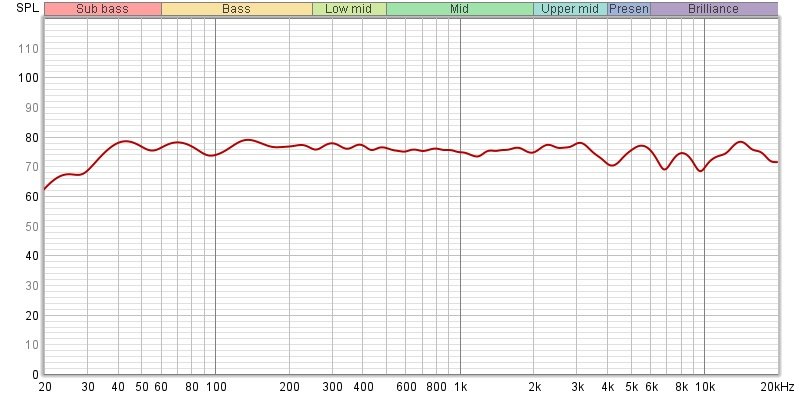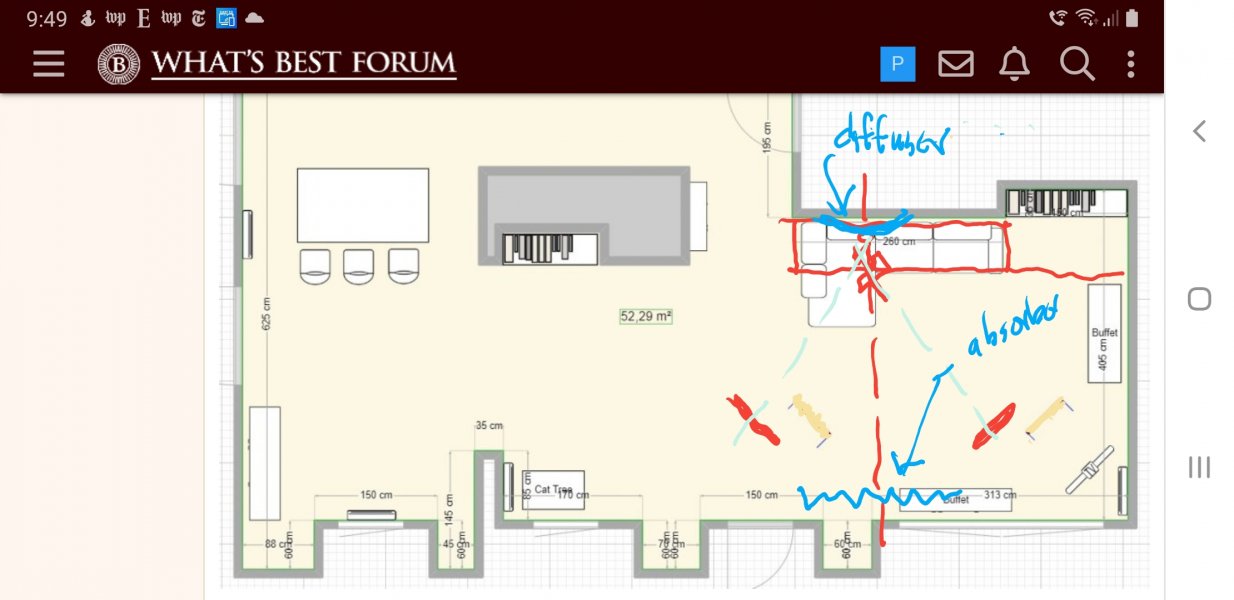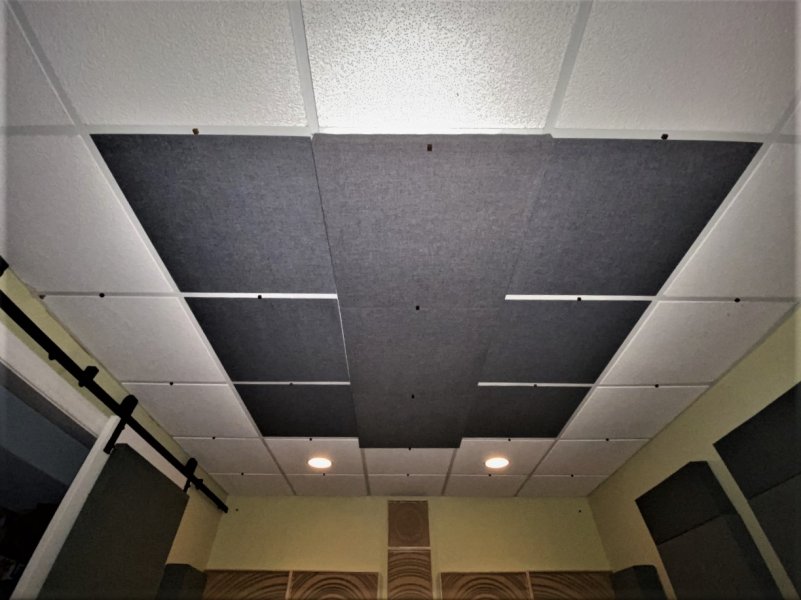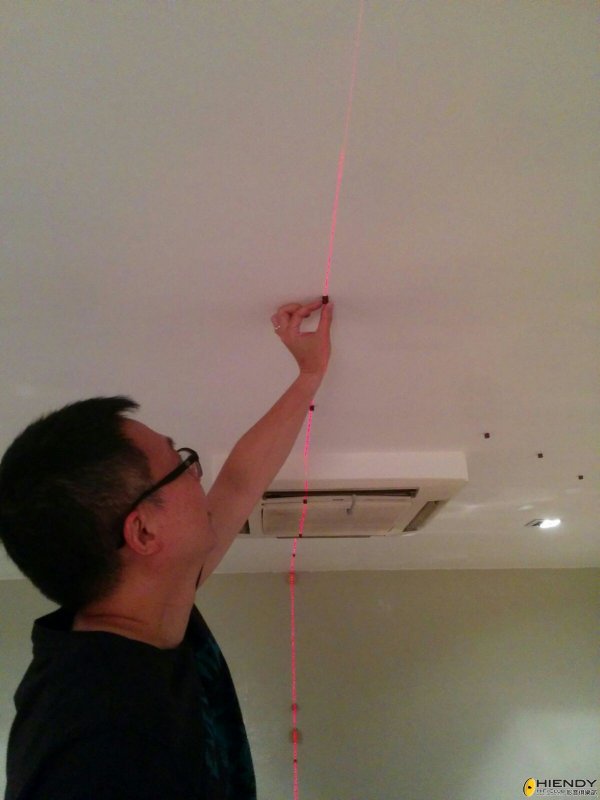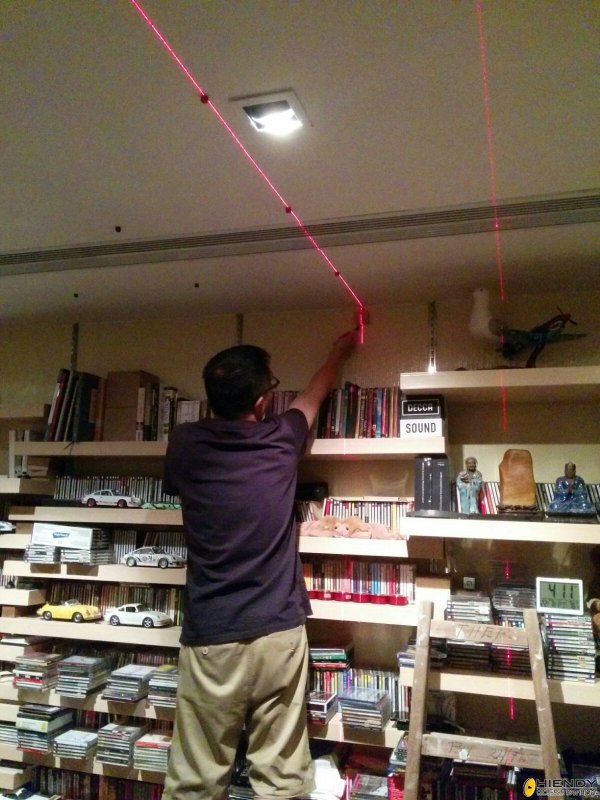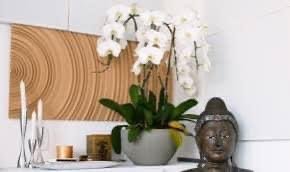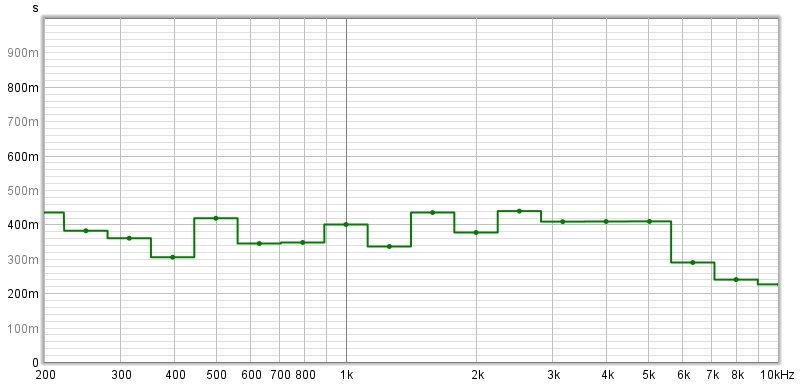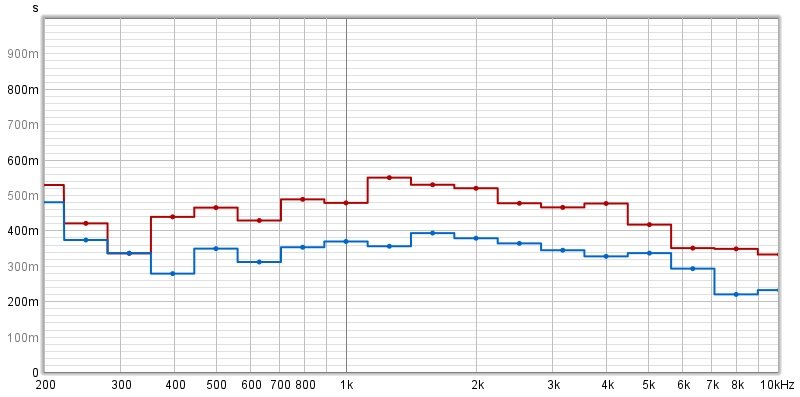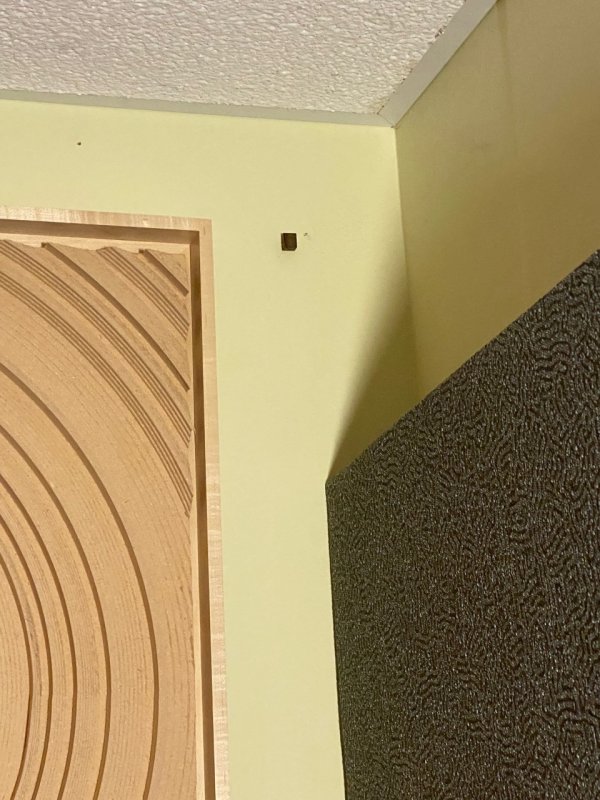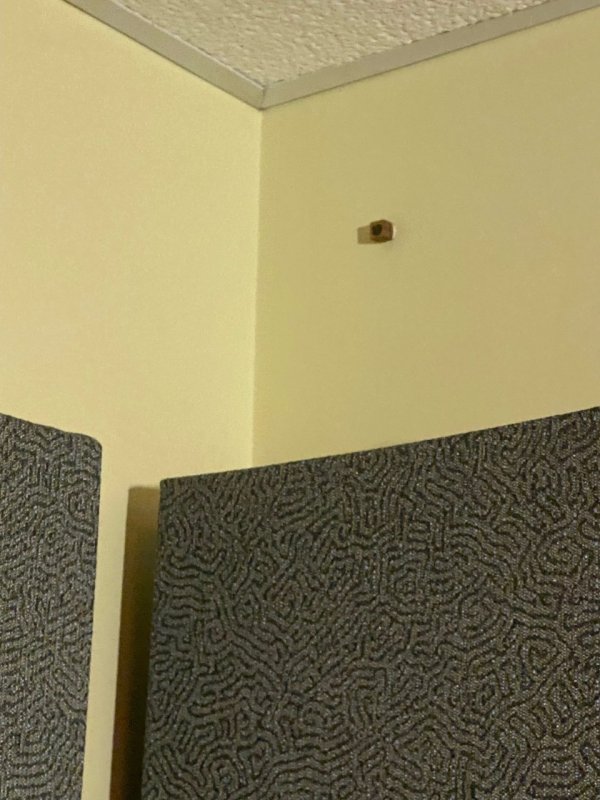I do not have a dedicated room, but would like to improve the acoustics in my living room.
My room is roughly 4 meters wide, and 11 meters long, ceiling is 2.5 meters high.
My listening spot is on one side of the room, my speakers are on the long wall. This setup is not perfect (not symmetrical), but I have tried every possible speaker placement and this is the best I have found.
My speakers are large (open baffle), but I do not feel they are "too large" and they play well at low listening volume. I have them on wheels, and store them in a corner of the living room when I am not using them.
Here is a sketch of my room:
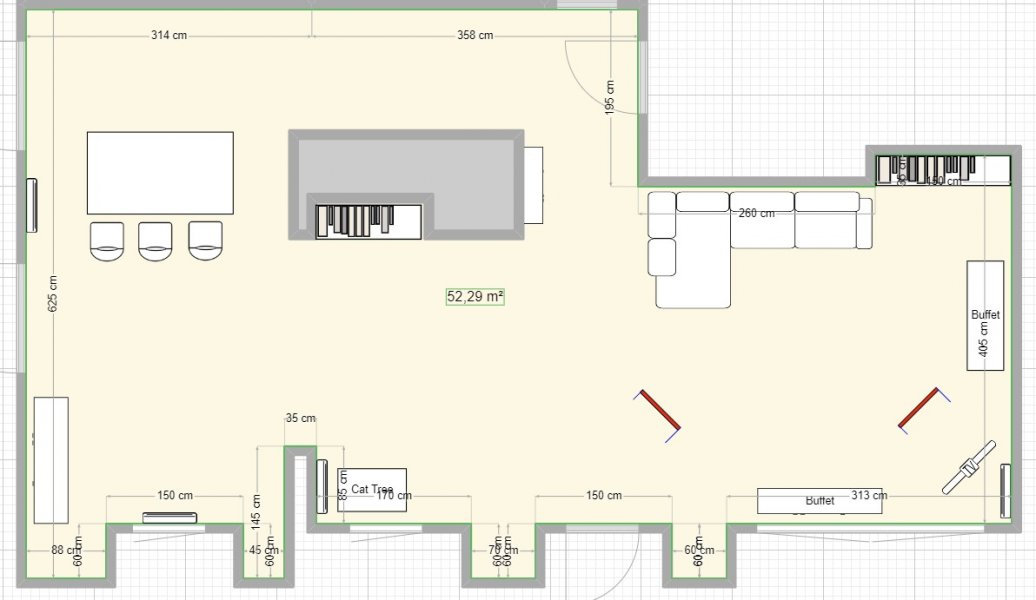
I have an acoustic curtain along the window behind the speakers. I have a coffee table in front of my couch, and slide it to another part of the living room when listening to my speakers. My couch is L shaped, and it gets in the way - but I plan on changing it. I change the angle of the TV when listening.
Here is an RT60 curve, taken from my listening spot:
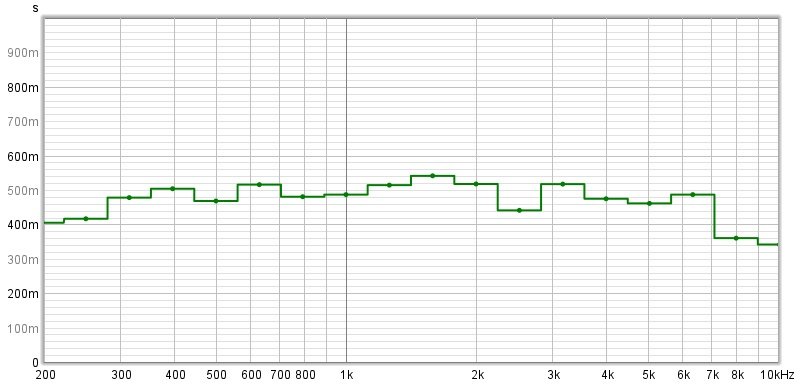
The RT60 is relatively flat, but I feel that things could be improved.
Here is a spectogram between 200-10.000 Hz (lower frequencies are also an area of improvement, but I don't want to get into this here):
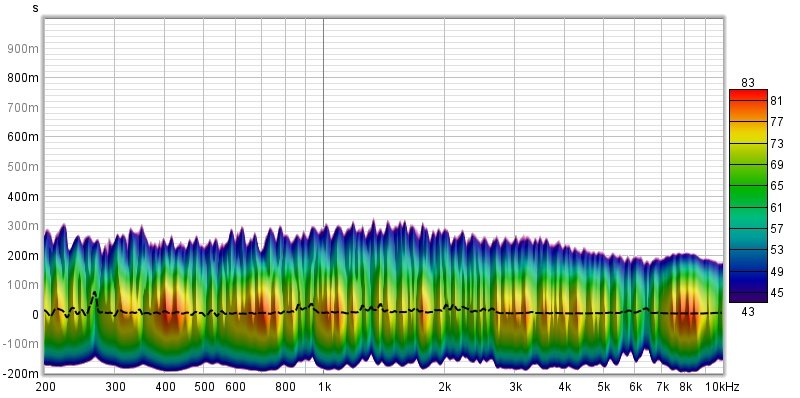
Even though I cannot permanently hang panels on my living room, I bought some for testing purposes, and have played around with absorption and diffusion at a number of places, including on the front wall (above my couch), but the difference is not really significant (both to my ears, and with measurements).
I feel that the main area of improvement are reflections on the ceiling & floor (low ceiling height, hard walls). I do have a carpet covering all the area between my speakers and the couch. From what I have read, carpets are not very effective, outside of high frequencies (if at all).
It is very hard to test panels on the ceiling. I have tried panels on the floor in front of the speakers (don't laugh), and feel they make a difference but this does not really correlate with significantly improved RT60.
Any advice ?
Are these measurements "good enough", or should I be targeting significantly lower measurements ?
My room is roughly 4 meters wide, and 11 meters long, ceiling is 2.5 meters high.
My listening spot is on one side of the room, my speakers are on the long wall. This setup is not perfect (not symmetrical), but I have tried every possible speaker placement and this is the best I have found.
My speakers are large (open baffle), but I do not feel they are "too large" and they play well at low listening volume. I have them on wheels, and store them in a corner of the living room when I am not using them.
Here is a sketch of my room:

I have an acoustic curtain along the window behind the speakers. I have a coffee table in front of my couch, and slide it to another part of the living room when listening to my speakers. My couch is L shaped, and it gets in the way - but I plan on changing it. I change the angle of the TV when listening.
Here is an RT60 curve, taken from my listening spot:

The RT60 is relatively flat, but I feel that things could be improved.
Here is a spectogram between 200-10.000 Hz (lower frequencies are also an area of improvement, but I don't want to get into this here):

Even though I cannot permanently hang panels on my living room, I bought some for testing purposes, and have played around with absorption and diffusion at a number of places, including on the front wall (above my couch), but the difference is not really significant (both to my ears, and with measurements).
I feel that the main area of improvement are reflections on the ceiling & floor (low ceiling height, hard walls). I do have a carpet covering all the area between my speakers and the couch. From what I have read, carpets are not very effective, outside of high frequencies (if at all).
It is very hard to test panels on the ceiling. I have tried panels on the floor in front of the speakers (don't laugh), and feel they make a difference but this does not really correlate with significantly improved RT60.
Any advice ?
Are these measurements "good enough", or should I be targeting significantly lower measurements ?
Last edited:


